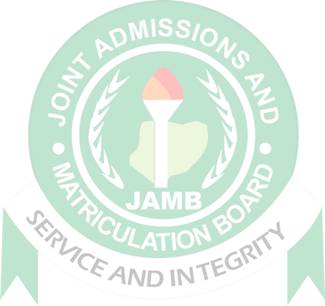
Chemistry
Paper 1 | Objectives | 50 Questions
JAMB Exam
Year: 2000
Level: SHS
Time:
Type: Question Paper
Answers provided
FREE
No description provided
Feedbacks
This paper is yet to be rated

Paper 1 | Objectives | 50 Questions
JAMB Exam
Year: 2000
Level: SHS
Time:
Type: Question Paper
Answers provided
No description provided
This paper is yet to be rated
DAAD scholarship to assist Sub-Saharan African students fleeing war in Ukraine to complete their studies
Did you apply the MTN Ghana Bright Scholarships 2022 for Ghana Undergraduate Students?
Managing Stress and anxiety in exams, 10 tips and strategies for Coping exam stress and test anxiety.
| # | Question | Ans |
|---|---|---|
| 1. |
A mixture of iodine and sulphur crystals can be separated by treatment with? A. Water to filter off sulphur B. carbon (IV) sulphide to filter off iodine C. ethanoic acid to filter off sulphur D. methanol to filter off iodine
Show Content
Detailed SolutionA mixture of iodine and sulphur can be separated by adding Carbon disulphide that is (CS₂) then stir the solution and filter it . As sulphur dissolved in CS₂, so it come into filter and got separated from the mixture. |
|
| 2. |
Sieving is a technique used to separate mixture containing solid particles of A. small sizes B. large sizes C. differents sizes D. the same sizes |
C |
| 3. |
Which of the following compounds is composed of Al, Si, O and H? A. Epsom salt B. Limestone C. Clay D. Urea |
C |
| 4. |
50 cm3 of carbon (II) oxide was exploded with 150 cm3 of air containing 20% oxygen by volume. Which of the reactants was in excess? A. Carbon (II) oxide B. Carbon (IV) oxide C. Oxygen D. Nitrogen
Show Content
Detailed Solution2CO + O2 → 2CO250cm3 → 25cm3 20% * 150 = 30cm3 30 cm3 is the volume of oxygen available for the reactions. But only 25 cm3 is required; therefore O2 is in excess |
|
| 5. |
How many moles HCL will be required to react with potassium heptaoxodichromate (VI) to produce 3 moles of chlorine? A. 14 B. 12 C. 11 D. 10
Show Content
Detailed SolutionK\(_{2}\)Cr\(_{2}\)O\(_{7}\) + HCl → Cl\(_{2}\) + KCl + CrCl\(_{3}\) + H\(_{2}\)OBalancing the equation, we have K\(_{2}\)Cr\(_{2}\)O\(_{7}\) + 14HCl → 3Cl\(_{2}\) + 2KCl + 2CrCl\(_{3}\) + 7H\(_{2}\)O |
|
| 6. |
The ratio of the initial to final pressure of a given mass of gas is 1:1.5. Calculate the final volume of the gas if the initial volume was 300 cm3 at the same temperature A. 120 cm3 B. 200 cm3 C. 450 cm3 D. 750 cm3
Show Content
Detailed SolutionFrom P1V1 = P2V21 * V1 = 1.5 * V2 ((1 * 300)/1.5) = V2 ∴ V2 = 200 cm3 |
|
| 7. |
The partial pressure of oxygen in a sample of air is 452 mm Hg and the total pressure is 780 mm Hg. What is the mole fraction of oxygen? A. 0.203 B. 0.579 C. 2.030 D. 5.790
Show Content
Detailed SolutionMole fraction = \(\frac{\text{Partial pressure of component}}{\text{Total pressure of compound}}\)= \(\frac{452}{780}\) = 0.579 |
|
| 8. |
The fundamental difference between the three states of matter is the A. shape of their particles B. number of particles in each state C. shape of the container they occupy D. degree of movement of their particles |
D |
| 9. |
Which of the following statement is correct about the periodic table? A. Elements in the same period have the same number of valency electron B. The valence electron of the elements in the same period increase progressively across the period C. Elements in the same group have the same number of electron shells D. The non-metallic properties of the elements tend to decrease across each period |
B |
| 10. |
The electron configuration of \(_{22}X^{2+}\) ion is A. 1s2 2s22p6 3s2 3p6 4s2 3d2 B. 1s2 2s22p6 3s2 3p6 4s2 3d1 C. 1s2 2s22p6 3s2 3p6 D. 1s2 2s22p6 3s2 3p6 4s2
Show Content
Detailed Solution\(_{22}X^{2+}\) has 22 electrons but has been ionized to 2+ by giving off 2 electrons. Hence, the ion \(_{22}X^{2+}\) has 20 electrons.The electronic configuration = 1s\(^2\) 2s\(^2\) 2p\(^6\) 3s\(^2\) 3p\(^6\) 4s\(^2\). |
Preview displays only 10 out of the 50 Questions